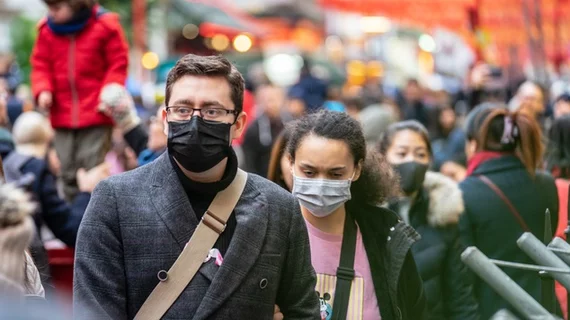The American College of Radiology released its first official public statement on the coronavirus Wednesday, laying out the current radiologic evidence regarding the virus and offering radiologists and healthcare facilities guidance on how to best deploy imaging exams in suspected cases.
The guidance comes as the World Health Organization officially labeled the COVID-19 outbreak as a global pandemic. Current figures indicate 121,564 confirmed cases of the virus, with 4,373 deaths and 66,239 patient recoveries.
As U.S. hospitals begin to see an influx of potential cases, the ACR pointed to the Centers for Disease Control and Prevention recommendations. For example, the federal agency does not currently recommend chest x-ray or CT to diagnose the coronavirus. It maintains that viral testing is the only way to confirm the disease, even if a patient’s radiologic findings indicate COVID-19.
The college also noted that “generally,” findings on chest imaging are not specific, overlapping with other conditions such as influenza, H1N1, SARS and MERS. Computed tomography may be further limited given that the U.S. is in the middle of flu season and contains a “much higher prevalence” of influenza cases compared to the coronavirus.
“To date, most of the radiologic data comes from China. Some studies suggest that chest CT in particular may be positive in the setting of a negative test,” the statement from the ACR read. “We want to emphasize that knowledge of this new condition is rapidly evolving, and not all of the published and publicly available information is complete or up-to-date.”
The ACR offered four recommendations based on their research. They suggest that:
1) “CT should not be used to screen for, or as a first-line test to diagnose COVID-19.”
2) “CT should be used sparingly and reserved for hospitalized, symptomatic patients with specific clinical indications for CT. Appropriate infection control procedures should be followed before scanning subsequent patients.”
3) “Facilities may consider deploying portable radiography units in ambulatory care facilities for use when CXRs are considered medically necessary. The surfaces of these machines can be easily cleaned, avoiding the need to bring patients into radiography rooms.”
4) “Radiologists should familiarize themselves with the CT appearance of COVID-19 infection in order to be able to identify findings consistent with infection in patients imaged for other reasons.”
Controlling the spread of infection, not only between patients and visitors, but safeguarding staff should also be top of mind for facilities handling coronavirus cases, the college said.
Imaging rooms should be cleaned and decontaminated, and air-flow within immovable x-ray or CT rooms should also be considered before examining subsequent patients. This could lead to exam rooms being off limits for about one hour after imaging an infected patient, the college said in its statement.
“These measures to eliminate contamination for subsequent patients may reduce access to imaging suites, leading potentially to substantial problems for patient care,” the statement read.
The ACR Data Science Institute also published an AI use case March 11 on COVID-19. It includes necessary clinical information, inputs, outputs and possible “corollary features” for creating an algorithmic platform to detect the virus.

